Medical Recipes from a mid-19th century Grandmother’s diary
It’s not often I get to write about MEDICAL recipes, but the opportunity presented itself when my dear friend Elizabeth sent me a scan of a real treasure from her culinary matriarchy: her great-great-great-great grandmother Angelina’s journal from 1850.
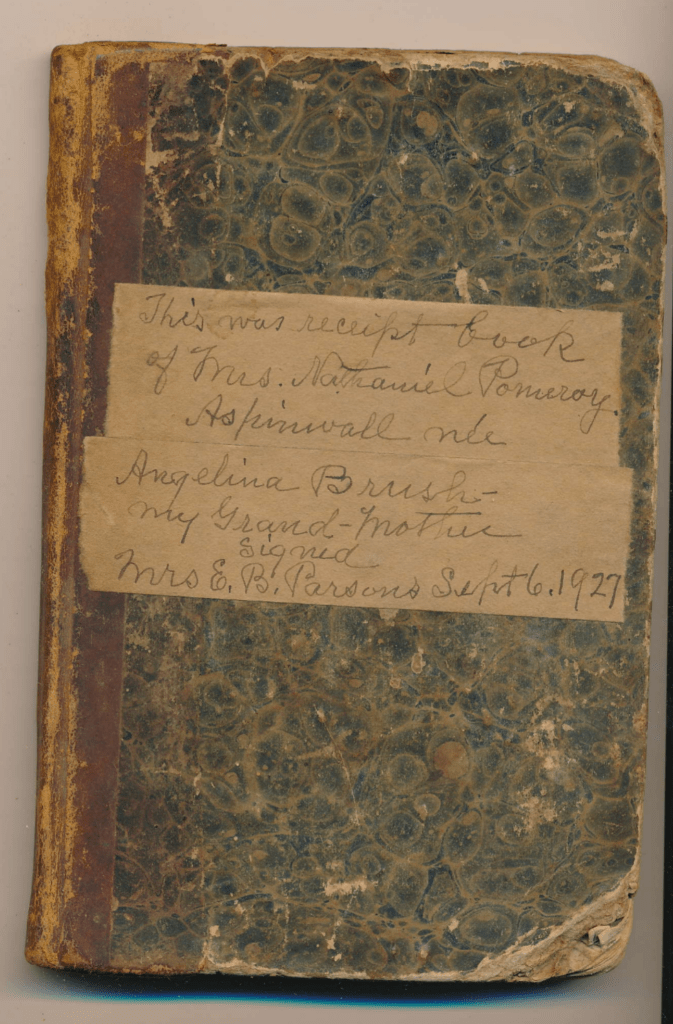
Angelina Brush Aspinwall lived from 1805-1886, primarily in Elmira, New York, and wrote her journal exclusively in 1850 while pregnant with her 8th child. She had a wildly full house of children, her husband, a maid AND her parents.
Angelina’s notebook is filled with recipes (for food!), and has some real interesting doozies I’d love to try: many cakes, a handful of different boiled puddings, two varieties of “Tomato Joy” (a spicy ketchup-y relish) using underripe tomatoes or ripe tomatoes, and a recipe for Rusk - my favorite food from the past. She also dedicates some of her notebook to figuring out how the heck her son should budget himself while away at seminary - a detail in the notebook I found so sweet.
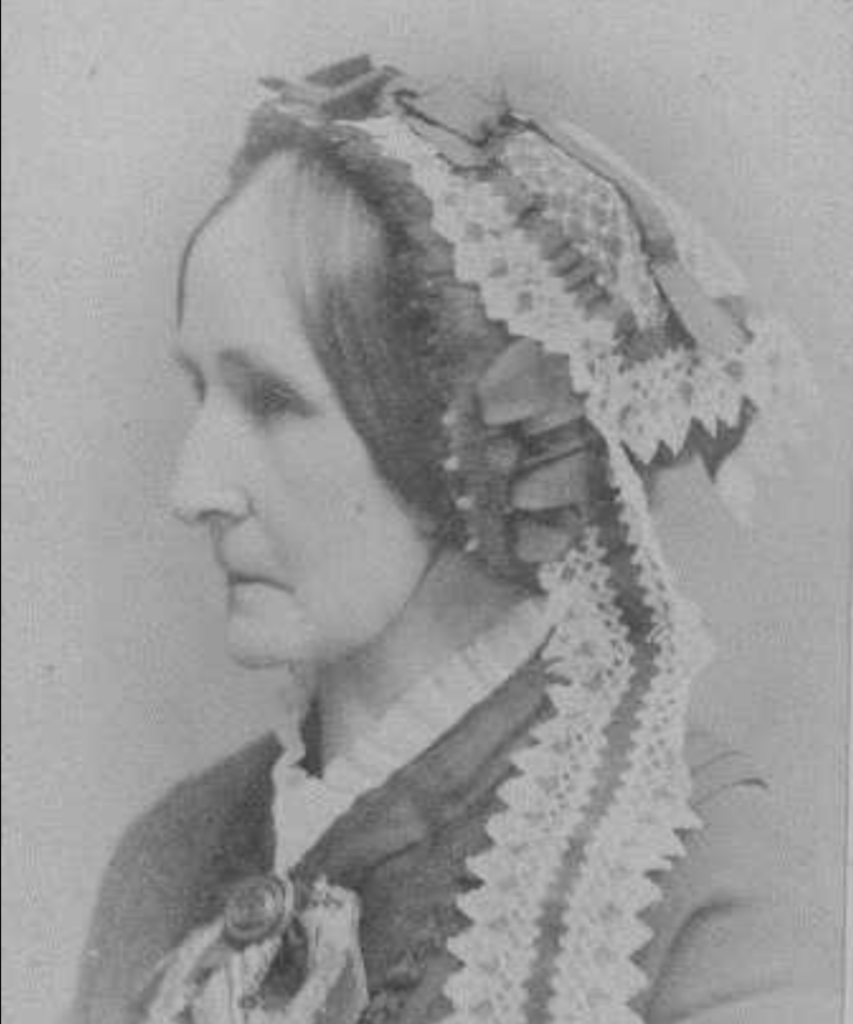
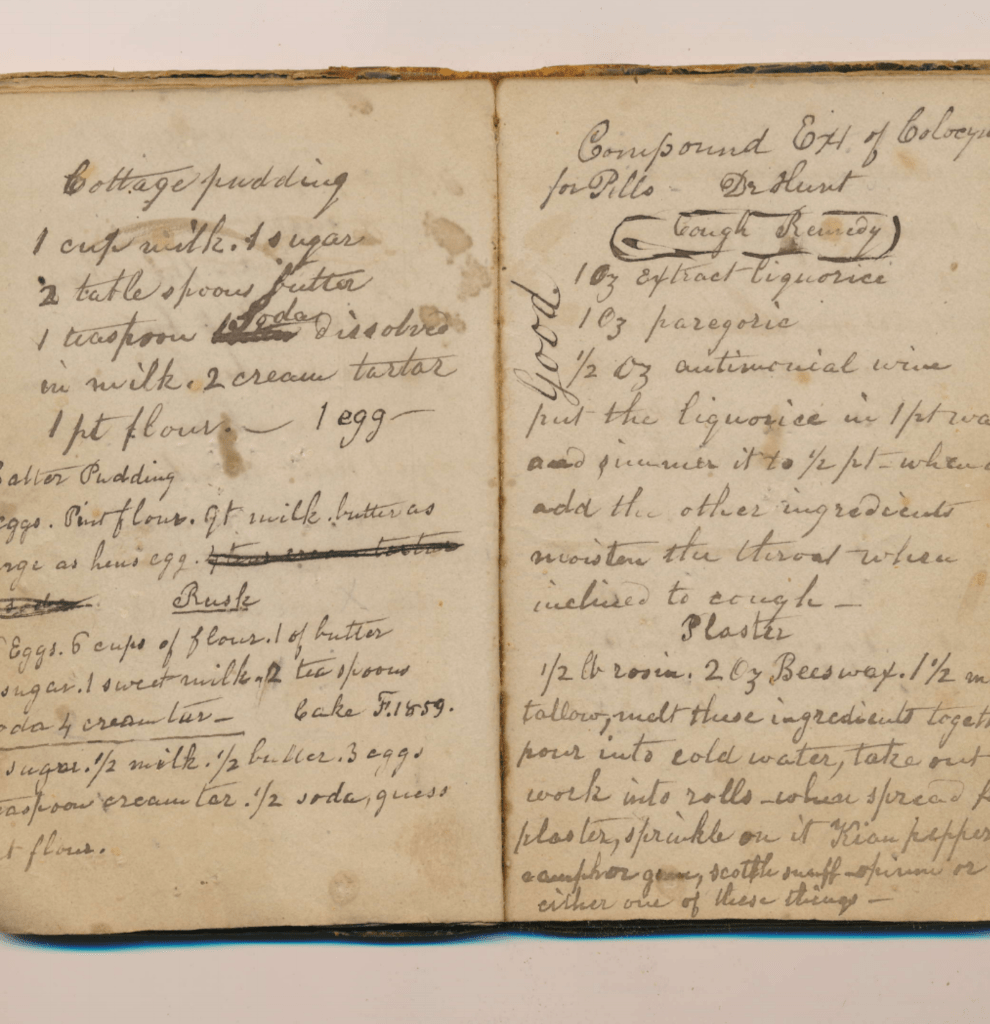
Buuuutttt…what I really wanted to share right out the gate was her household cures for common ailments. Spliced in there, right next to her recipes for batter cake and muffins, are formulas for concocting relief for cough, diarrhea, and more! I find it fascinating to learn the remedies people used, and feverishly investigate all the ingredients, trying to figure out what the heck some of them are (like cantharides! What the heck are those! spoiler: I figure it out.).
The remedies are often, well, a little macabre. In Angelina’s day, using chloroform for pain was pretty standard as well as household use of opium tinctures, which today is a controlled substance in most countries. For Angelina, however, these remedies were to save her children’s lives, and ease her family’s pain. She kept track of them because she saw them get results. I mean, chloroform WORKS, y’all.
Reading them sets aflame my love for feminine, domestic magic. Hope you enjoy these as much as I did.
(Oh, and I *really* hope it goes without saying, but since the world is crazy: I am by NO MEANS suggesting you make any of these. It would be a bad idea. I’m not a doctor, just a historical curiosities, digital-peddler.)
1. “For the Liver Complaint”
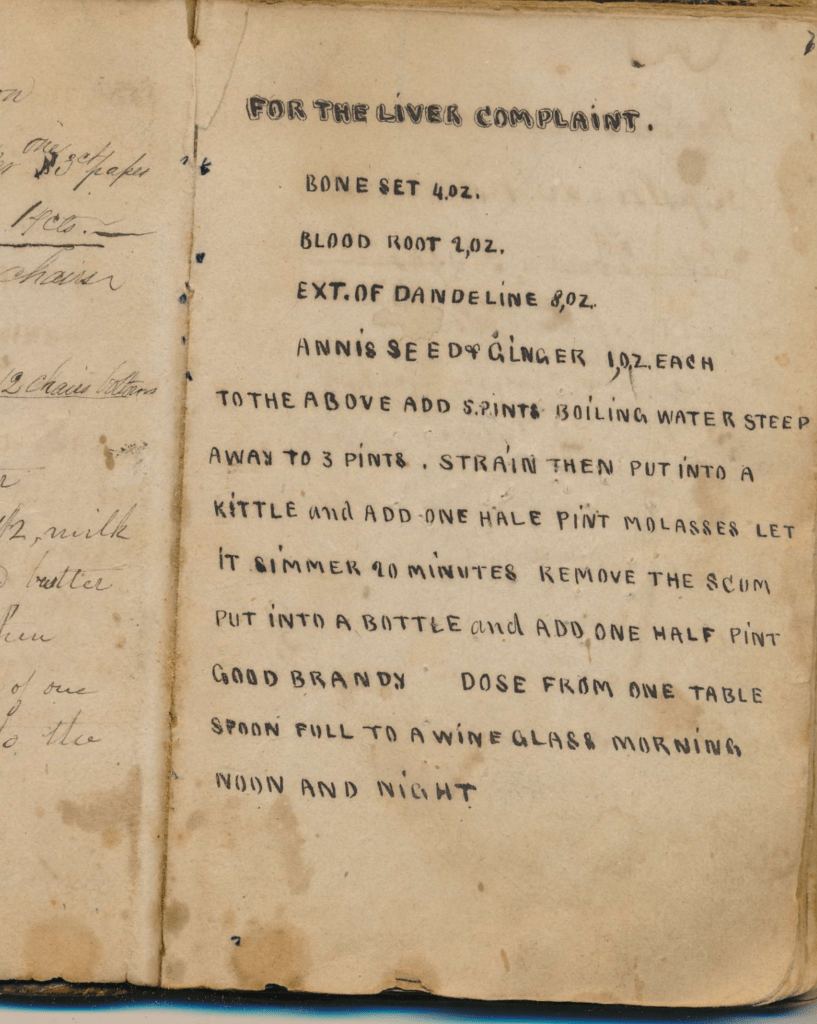
This is one of the first recipes in the book, and it looks like someone else might have written this one in there, judging from the script (unless Angelina got randomly experimental with her personal typeface one day, in a fit of hysterics, of course).
Transcription:
Boneset 4oz, Bloodroot 1oz, Ext. of Dandeline 8oz, Annis Seed & Ginger 1 oz each
To the above add 5 pints boiling water, steep away to 3 pints. Strain, then put into a kittle and add one half pint molasses let it simmer 90 minutes Remove the scum Put into a bottle and add one half pint good brandy
Dose from one tablespoon full to a wine glass morning noon and night
About what’s in it:
Boneset - TRICKS! Not for setting bones at all. It’s a flower, whose petals and leaves were dried and used medicinally to treat the flu, increase urine output, and make one sweaty. Here’s a video of a guy talking about it.
Bloodroot - Unlike “Boneset,” this common name has some integrity. Bloodroot is a flower native to the eastern half of North America. It’s stem produces a bright red juice used for dyes and face paint. Sanguinaria canadensis has been used in very small doses medicinally for a range of things, but it’s quite toxic, actually. Native Americans used this flower as poison, which is always great to have on hand.
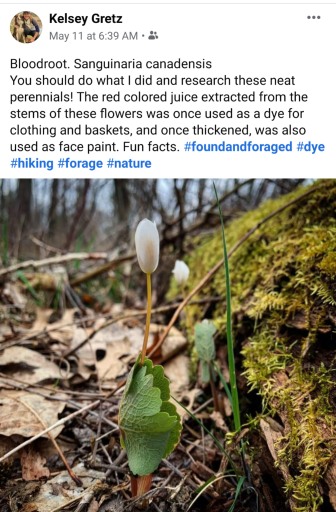
A foraging friend of mine recently found bloodroot in the woods! They’re really a pretty special plant, from their gaudy and temporary early spring petals, and the fact they rely on ants to carry their seeds. Kelsey was kind enough to dig one up in her yard and photograph it for me - it’s *amazing* how bloody and fleshy it looks.
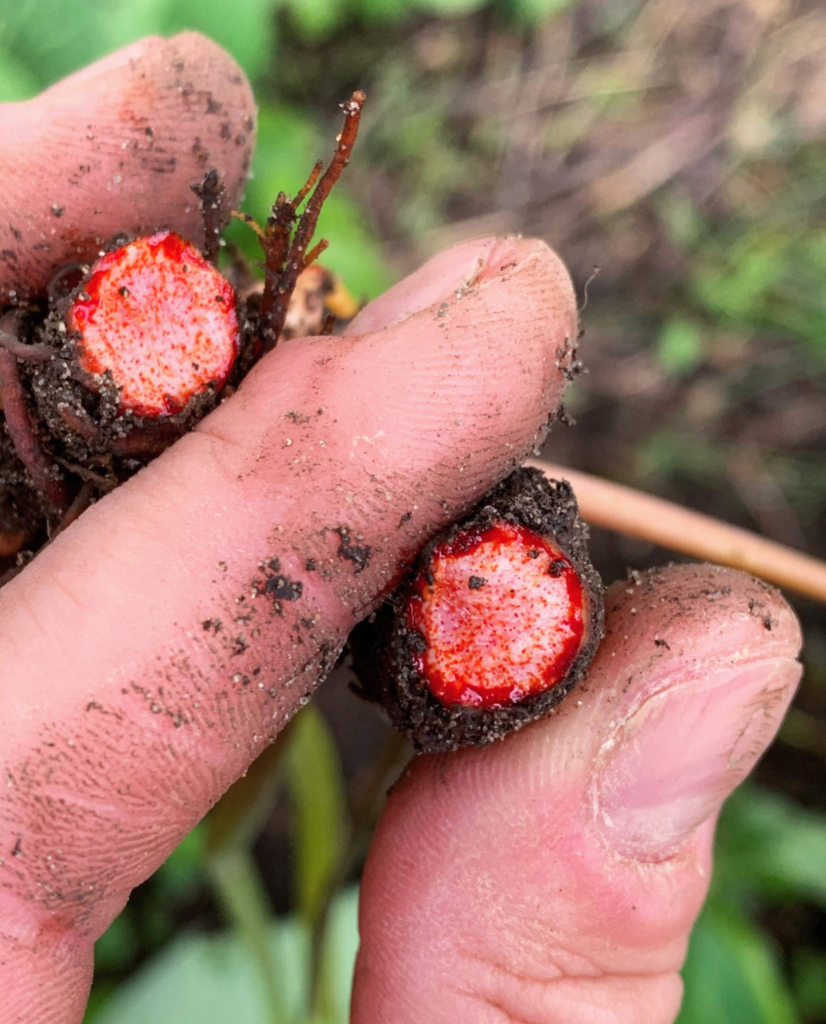
For some great info about the plant and about how it was used as a face paint (Algonquin men would use it while courting!), check out this article.
Brandy - I mean, it’s just sorta fun to see the past attempt to cure liver ailments with booze. That’s all I have to say about that. Except EDIT: as my friend Corinne pointed out to me, alcohol was often added not just for its purported medicinal qualities, but also to help with shelf-life, which could very well be it’s purpose here in this recipe.
Extract of Dandeline - misspelling of dandelion. Dandelion is STILL recognized as helpful for liver function, and is a common household tea or tincture for when someone is sitting around feeling guilty about the last time they tied one on.
2. “Colour Black”
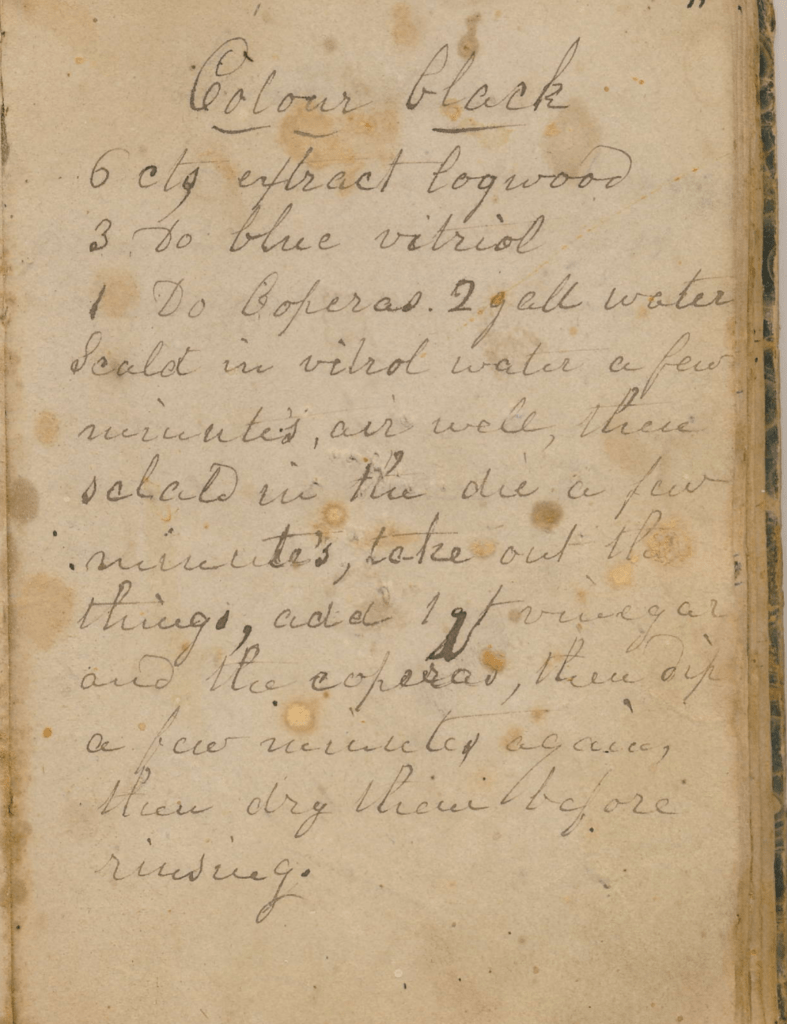
This isn’t a “medical recipe”, but it was too cool to leave out. Besides, this recipe produces a dark black dye, and dying all your clothes black can be medicine for your dark heart. Angelina is here for all your goth needs.
Transcription:
6 cts extract logwood, 3 do blue vitriol, 1 do coperas, 2 gall water
Scald in vitriol water, air well, there “scald”(?) in the die a few minutes, take out the things, add 1 qt vinegar and coperas, then air a few minutes again, then dry them before rinsing.
About what’s in it:
Logwood - From Encyclopedia Britannica: “Logwood, (Haematoxylum campechianum), also called bloodwood tree, tree of the pea family (Fabaceae), native to Central America and the West Indies.”
You can still find natural dyers who use logwood chips to produce violets, purples and some blacks.
Blue Vitriol and Coperas - I actually received an explanation about these ingredients from Angelina’s great-great-great grandson (Elizabeth’s dad.) He explained that blue vitriol is copper sulfate and “coperas” is a mispelling of “copperas” which is a ferrous sulfate. She is mixing those together with logwood to produce a dark black color.
3. “To Prevent the Hair Falling Off”
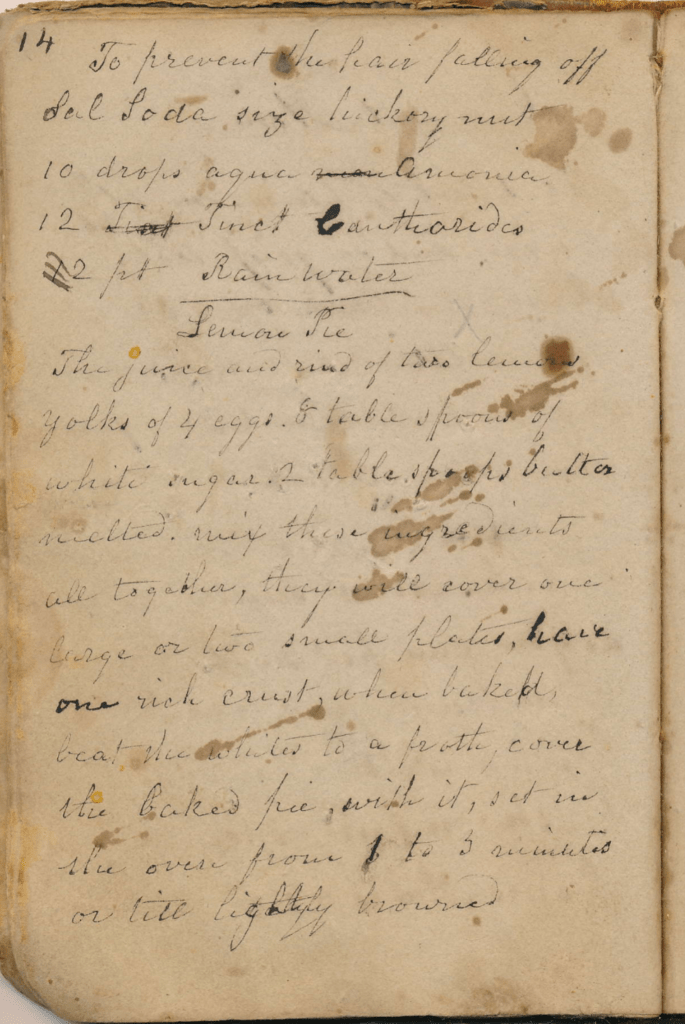
Using Angelina’s husband Nathaniel’s hairline as the barometer here, this remedy had mixed results.
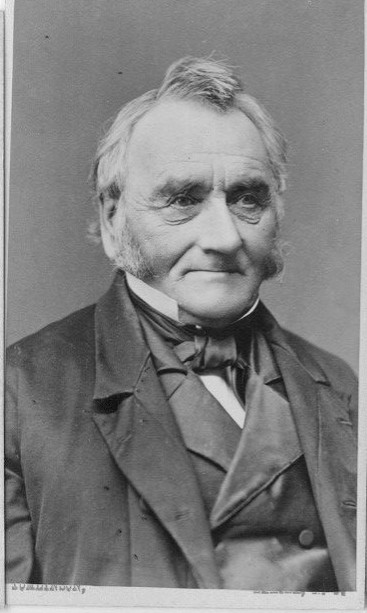
Transcription:
Sal Soda size hickory nut 10 drops aqua ammonia 12 tinct Cantharides 2 pt Rainwater
What’s in it:
Sal Soda - is sodium carbonate, a common cleaning ingredient throughout the 19th and first half of the 20th century. Nowsadays, it’s still a gentle cleanser, and *also* used to in skull preservation (it helps make the boiling process faster.)
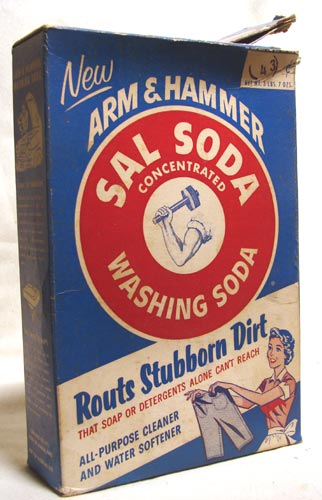
Cantharides - it’s dried beetle bits! Yeah! They’re often used to stimulate sexual arousal in male livestock to facilitate the breeding process, according to the Encyclopedia Britannica. But don’t get excited: “In humans the substance produces skin blisters on contact, and attempts to ingest it as an aphrodisiac are considered extremely hazardous. “
Using a known aphrodisiac to ward off hair-loss checks out to me (y’know, like man, testosterone-y stuff), but if it was producing SKIN BLISTERS on contact, I wonder how effective this might have been.
Rainwater - But WHY rainwater? Your guess is as good as mine here, and mine is something like this: it was probably believed that the well-water they used was bad for hair, due to it’s mineral content, color, aroma..something like that. Rainwater was probably seen as much cleaner, and in a time of better air quality, very well might have been the case.
4. “Cough Remedy”
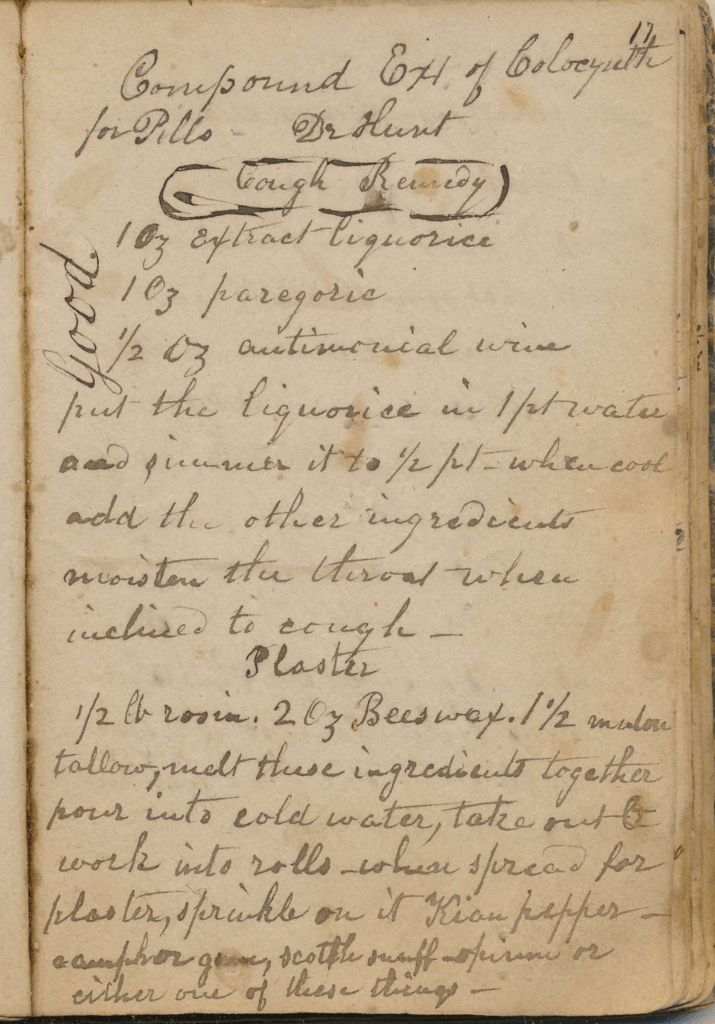
Hello, opium! It’s telling that this recipe has the words “good” scrawled across it in large letters.
Transcription:
1 oz extract liquorice 1 oz paregoric 1/2 oz antimonial wine put the liquorice in 1 pt water and simmer it to 1/2 pt when cool add the other ingredients moisten the throat when inclined to cough
What’s in it:
Paregoric - From Wikipedia: “Paregoric was a household remedy in the 18th and 19th centuries when it was widely used to control diarrhea in adults and children, as an expectorant and cough medicine, to calm fretful children, and to rub on the gums to counteract the pain from teething.”
It was an opium tincture, which now is absolutely a controlled substance due to it’s highly addictive properties. But back in the day, paregoric was used for all sorts of things, including making sweets! Looks like they might still be making those sweets.
Antimonial Wine - So, antimony is a rock (metalloid!). It’s shiny, it’s gray, and was often used in cosmetics where it’s referred to as “kohl.” How does a rock find it’s way into medicinal wine?
Regular wine was stored inside large urns, or small cups, where it was supposed to pick up the cleansing properties of antimony. From this article on metallic cures: “..as antimony could cleanse the most precious metal, gold, from impurities, alchemists reasoned it could also cleanse and cure God’s most precious creature, created after his own image: man. “
These cups were banned in England and France during the 17th century, since an acidic wine stored in an antimony cup would create a lethal concoction. They were legalized again in France during 1658, after antimonial wine was credited with curing Louis XIV of typhoid fever. After this point, antimony became a more studied substance and various ways of producing it were established, instead of just haphazardly drinking out of cups.
Angelina probably would have purchased antimonial wine from a druggist, rather than making it herself.
5. “Chloroform Lineament”
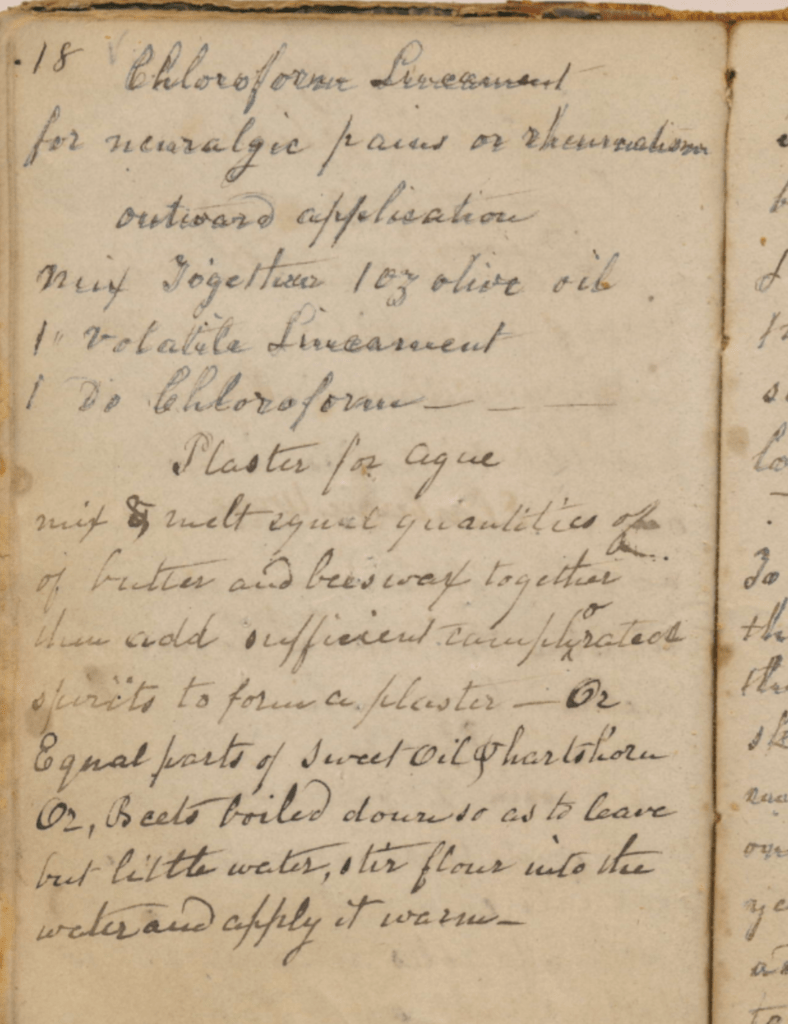
“Lineament” is a mispelling of “liniment”, which is a topical gel or oil used to relieve pain.
Transcription:
for neuralgic pains or rheumatism outward application
Mix together 1 oz olive oil 1 volatile lineament 1 do Chloroform
What’s in it:
Volatile Liniment - I’m not entirely sure what substance she has here, since a liniment could be a number of different liquids or oils. “Volatile” just means that the product needs to be freshly mixed as it can lose potency as it sits. Another recipe for chloroform liniment that I found from the 19th century calls for a “soap liniment,” which is made by mixing powdered soap, alcohol and oil of rosemary. My guess is Angelina had something kind of like that.
Chloroform - I just LOVE the history of chloroform. It’s wild to sit on this side of history and realize how widely used as it was, and all the places it was put (literally, literally, literally.) Classically, it was inhaled as a vapor and used for surgical anesthesia. It’s usage was tested at casual dinner parties in England, hosted by one Professor Simpson, and heralded by public health heroes Charles Dickens and the Queen of England.
-2.png)
Interesting about the Queen of England: the usage of chloroform during childbirth was frowned upon in the 19th century, and not for the reasons we’re thinking about (bad for baby, bad for mom, bad for duh, it bad.). It wasn’t allowed because the overwhelming consensus was that pain during childbirth was all a part of the Lord’s plan, and allowing women to have a pain-free childbirth would be going against the will of God.
Well, the Queen of England wouldn’t let that Rascal of Heaven have his spiteful way, and insisted on using chloroform for all of her children. This effectively lifted the taboo on using chloroform to relieve the pain of childbirth, and opened the door for women to have over their reproductive choices.
Chloroform’s use spread beyond childbirth and vapor inhalation. In Angelina’s formula, she’s using chloroform topically to relieve joint and muscle pain. Linda Stratman’s book Chloroform: The Quest for Oblivion outlines a few ways chloroform was used topically during this era, such as using a soaked rag to relieve tooth or scrotum pain. It was also applied by douche to relieve vaginal pain, or by enema syringe, via the aforementioned Professor Simpson. “In some cases,” Stratman says, “he declared that chloroform did more than give temporary relief; it had actually cured the condition.” Chloroform cures period cramps! Hooray!
Point is, people really went nuts for chloroform in the 19th century. It actually produced a huge win for reproductive rights for women, even though the stakes were (unknowingly) terribly dangerous.
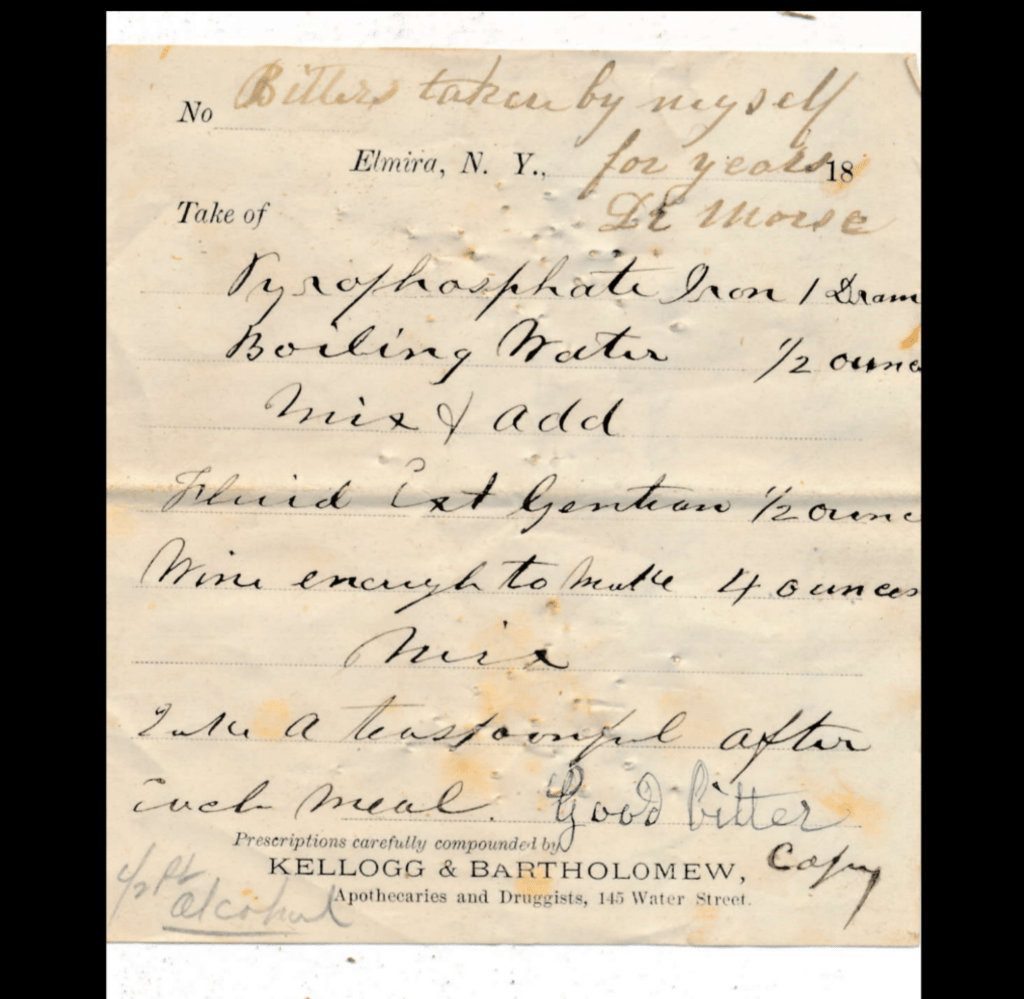
Thank you so much to Elizabeth and Henry Dieterich for sharing this fascinating family treasure with me, and helping me with research. It’s an honor to be let in on family history, and a pleasure to have a chance to write about such a fascinating topic.
All right, stay safe out there guys.
